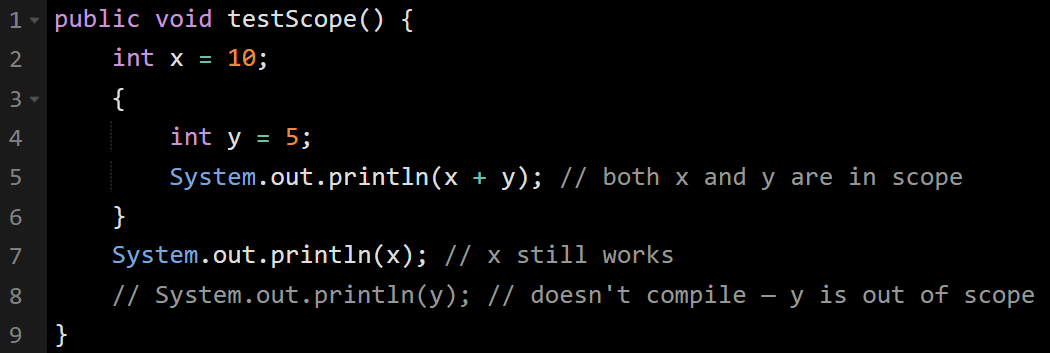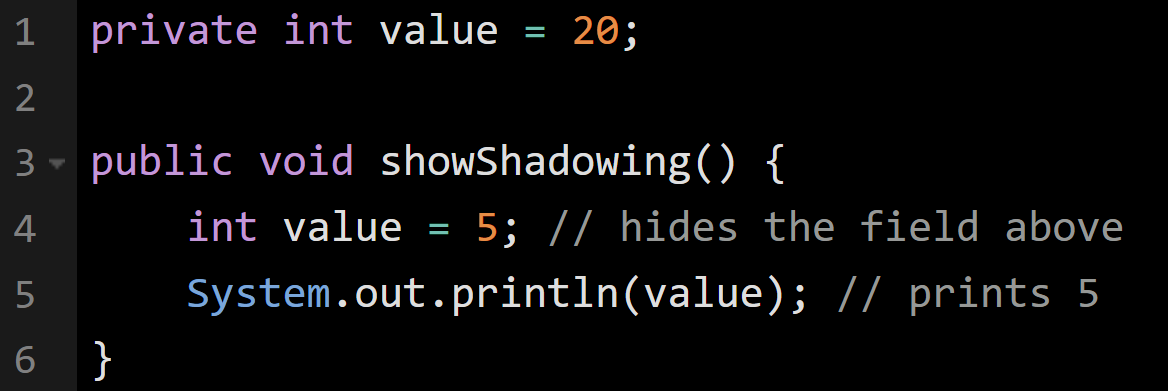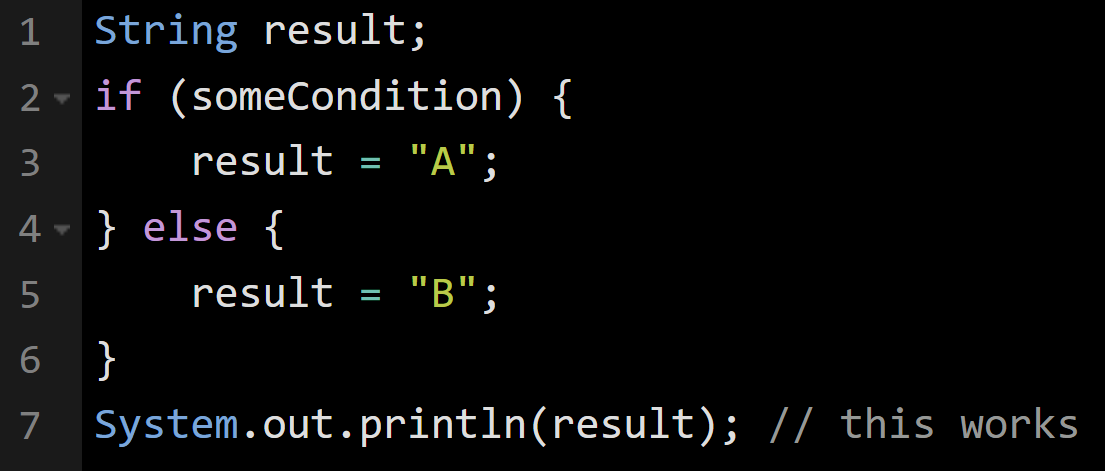Java Scope, Part 1 — Local Blocks and Braces
Some of the small scope rules that can mess you up early on
This is part one of a short series on how scope works in Java, written for beginners. It starts with the basics and moves toward the trickier edge cases.
When I first started learning Java, scope was one of the concepts that confused me a lot. Java mostly sticks to familiar patterns, but there are a few quirks that throw things off because of how Java works internally. A variable would suddenly “disappear,” or I’d get an error about reusing a name I thought would be fine. The rules aren’t that complicated, but they sneak up on you if you’re not watching for them.
Today we will focus on the kind of scope you run into inside a method, how Java treats variables depending on where they’re written, and why wrapping something in {} changes what you can do with it.
Scope Inside Braces
A variable only sticks around inside the block where you declared it in Java. As soon as the block ends, that variable is done. That’s true even if it feels like it should still be sitting there, ready to use.
This was my first real issue with scope early on. It felt like I was writing things in the right order, but variables like y don’t live beyond the block they’re in. You can’t use them later. It might seem obvious once you’ve seen it, but most people run into something like this the first time they deal with scope.
Shadowing Happens Quietly
Java lets a local variable or method parameter hide a field with the same name, but it doesn’t let one local variable hide another inside the same method. Trying to redeclare the same name in a nested block produces a compilation error.
When I first saw this, I didn’t realize it was legal. And even after I knew it compiled, I didn’t like it. I’ve accidentally reused variable names like this before and spent way too long figuring out why the output didn’t make sense. I try to avoid doing this now just to keep things clearer for future debugging.
Loops and Scope
This one’s another simple one, but it still threw me off when I was new. If you declare a variable inside a loop, you lose it as soon as the loop finishes. It’s created and destroyed with each pass through the loop.
I remember trying to use a loop variable outside the loop and being confused when it couldn’t be found. Java sees that variable as part of the loop block, and it won’t let you use it anywhere else. You just have to plan for that.
Try-Catch Scope Rules
Try, catch, and finally blocks also each have their own little bubble just like loops. Variables that live inside one don’t carry over to the others unless you put them up top.
This came up for me while writing some code that handled a file read. I declared something in the try, and then couldn’t understand why it was out of reach in the catch block. Took me a few minutes to realize I needed to move the declaration outside the try if I wanted to use it in both places. The same thing goes for the exception itself, once the catch block ends, the exception variable goes with it.
Declaring Ahead of Time
If you know you’ll need a variable after a conditional or a try block, the safest thing to do is just declare it before the block starts. It sounds obvious now, but I didn’t always think ahead like this.
There were times when I tried putting result inside both sides of the if, and I’d get weird errors about it not being initialized. Moving it outside solved the problem. It’s one of those habits you pick up after seeing the same error message a few times.
Conclusion
Scope in Java is pretty straightforward once you’ve seen it a few times, but when you’re just starting out, it can feel confusing. The rules aren’t hard, but until you’ve seen how Java enforces them, they can catch you off guard. The examples in this post are some of the most common ones you’ll run into early on, and they’re the ones that helped me start seeing the patterns.
If this was helpful or if you like seeing how things behave under the surface, feel free to subscribe. I’ve got more coming, next we will look at method scope, class fields, and how this fits into the picture. That’s where things start to tie into how objects work, not just variables.







